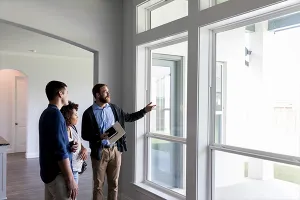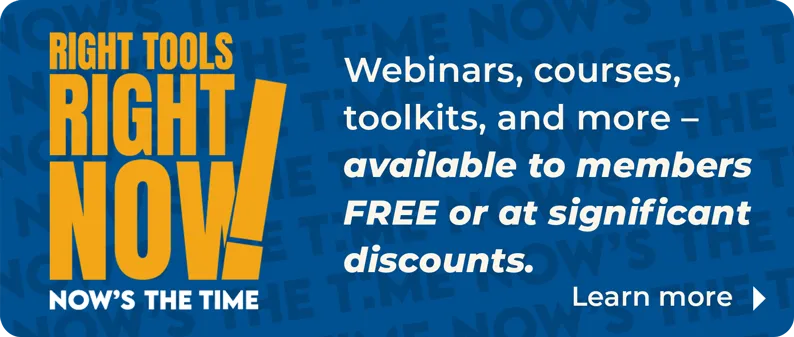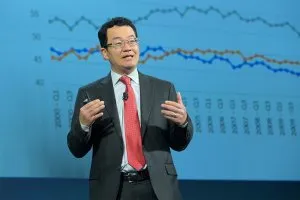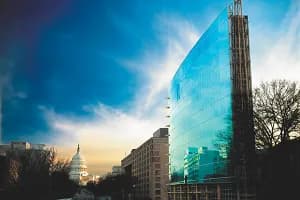When it was introduced in Curitiba, Brazil, nearly 30 years ago, bus rapid transit (BRT) was transformational. With features like lanes exclusively for buses, bus signal priority, and rail-station-like bus stops where riders paid fares instead of using on-board fare boxes while buses idled, the system became a worldwide model.
Fast forward to today, and cities throughout the United States have implemented some features of BRT. However, few outside of Cleveland and Boston have adopted the whole BRT kit and caboodle.
“Most BRT systems would have dedicated or semi-dedicated lanes, but that’s not happening here,” explains Mariia Zimmerman, a principal at MZ Strategies, an Arlington, Va., transit consultancy. “In some ways, BRT in the United States is similar to how we talk about high speed rail. We’re not really doing high speed rail; rail is just faster than it was before. We’re not really doing BRT, either. But quick service with an easy-on payment system and some lane changes are going to allow transit authorities to treat BRT like light rail.”
Does it really matter what qualifies as BRT? And whatever BRT is, what are the standards for good bus service in the United States today?
BRT Definition: Anyone? Anyone?
Ask those immersed in the transit world what they consider BRT, and you’ll age dramatically before reaching consensus.
“There are multiple definitions,” admits Dennis Hinebaugh, director of the National Bus Rapid Transit Institute and transit program director at the Center for Urban Transportation Research at the University of South Florida in Tampa. “In its simplest forms, BRT is a rail-type application, but using buses. There are less-frequent stops; there’s improved frequency of service and travel speeds and enhanced vehicles and bus stations — we call them stations instead of stops. There’s also improved technology, maybe giving next-stop information at stations. Or systems might use traffic-signal priority, meaning if a bus is running late, it might get an extended green light or be a queue jumper, which would allow it to jump ahead of the queue of vehicles.”
Jeffrey Boothe agrees the definition of BRT is fluid. “The spectrum of BRT is much wider than the spectrum for streetcar and light rail systems,” says the partner at Holland & Knight in Washington, D.C., who specializes in transportation policy and transit-oriented development. “What bus system in the United States has the most features that come the closest to a light rail system? It’s Cleveland. At the other end of the spectrum, we have cities increasing their frequency and adding next-vehicle information, but their stations are just enhanced bus shelters. Yet they call that BRT.”
This fuzzy framework is a more serious problem than it might seem. “I was at an event in March sponsored by the Rockefeller Foundation, and the biggest issue was the failure to define BRT,” says Boothe. “While some segments are reluctant to define it — they want everything to fall within the rubric of BRT — that’s undermined the industry’s ability to document BRT’s effectiveness to show it’s anything more than glorified bus service. And how we define the project and its features affects its ability to qualify for capital funding.”
The Bus Gold Standard
Whatever transit agencies want to call their offerings, Cleveland’s HealthLine system is widely regarded as driving standards for good bus service in the United States today.
Initially called the Euclid Corridor, the system was renamed because of a partnership with the Cleveland Clinic and University Hospitals, two major locations along Euclid Avenue, the key thoroughfare served by the 40-stop BRT system. Specially designed hybrid buses arrive every five minutes during morning and afternoon weekday rush hours and on less-frequent increments throughout the rest of its 24/7 schedule.
“We basically changed the entire traffic pattern in Cleveland,” says Mary Shaffer, media relations manager at the Greater Cleveland Regional Transit Authority (GCRTA). “It’s 9.2 miles, but the Euclid Avenue part is 7 miles of what I call ‘heavy BRT.’ We went from two lanes both ways to a much larger, expanded area with a dedicated transit line that’s sometimes one, sometimes two lanes. We also installed things like elevated platforms and fare machines at stations. The other 2.2 miles is ‘light BRT.’ There’s some BRT that may include a specialized longer, larger-capacity vehicle, but it’s running on regular roads, and we don’t do elevated platforms or fare boxes at stations.”
Estimates of the economic development benefits from the $200-million system have ranged from the GCRTA’s $2 billion to the Cleveland Plain Dealer’s $4.4 billion. “Newer numbers suggest it’s more than $5 billion,” says Shaffer. “It’s kind of the spark that lit the fire behind developing Euclid Avenue again.”
Montgomery County, Md., is hoping to get a similarly strong economic return with a BRT system still in the planning stages. There are already bus routes in the county, though they primarily lead into and out of the nation’s capital. What the area lacks is transit to carry people to locations within the county. Current plans call for branded buses that will run on as many as 23 routes, mostly along state highways, some of which will have lanes that have been repurposed into bus lanes, and stations will have off-board fare collection and platforms that will be level to the buses.
“Our BRT system will be about 161 miles of mass transit through the county that will run on roads as we now know them,” says Bonnie Casper, an agent at Coldwell Banker Residential in Bethesda. “That way, we’ll be able to get this going faster and less expensively than by doing rapid rail. It’s much more feasible to finance $2 billion to get 161 miles than the same amount for a couple of miles of a rapid-rail system.”
Casper is also 2012 president of the Greater Capital Area Association of REALTORS®, which is backing the plan. “We don’t even see it directly as a matter of land values, though it clearly is,” she explains. “We’ve done this because we recognize that implementation of the proposed network is really important to economic development in our area. Without it, we stand to lose an opportunity to bring thousands of jobs into the county. We don’t just sell real estate but a quality of life, and if we’re going to be able to grow our economy, we need to compete in the region.”
Express Busing Gains Traction
Fresno, Calif., and Chicago, Ill., are striving for quality bus service with new express-bus plans. Fresno considered light rail, but ruled it out. “It’s a very auto-centric suburban environment,” says John Downs, planning division manager at the Fresno Department of Transportation. “There simply wasn’t the demand or money enough to justify light rail.”
Fresno plans to upgrade the two busiest routes on its system, launching in 2015. “We’re getting much nicer stations, each with level boarding platforms so people don’t have to climb into buses,” says Downs. “We’ll have nextbus- arrival signs and off-board ticketing. We won’t have exclusive bus lanes, but they’re designed so other vehicles aren’t supposed to use them to get from point A to point B. We’re getting nice curb extensions so buses will stay in the third lane and not pull to the curb, along with transit- signal priority. We’re also going to have a special place for buses to go into to get a head start on traffic instead of waiting for traffic to clear. All are techniques to speed up service and give passengers a more comfortable ride.”
The Chicago Transit Authority (CTA) will be testing similar elements of BRT with its November 2012 launch of the “Jeffrey Jump” pilot program, according to Joe Iacobucci, manager of strategic planning. The express-bus service will operate from 103rd Street on the south side to Metra’s Ogilvie and Union light rail stations downtown, shaving five to seven minutes off rush-hour commutes.
Buses will operate in dedicated lanes from 7-9 a.m. northbound and 4-6 p.m. southbound, says Iacobucci. They’ll also have traffic signal priority during some stretches and will stop at less-frequent, half-mile intervals. The CTA is also upgrading about 20 stops with lighted shelters that will feature bus-tracker LED displays, kiosks with route and local neighborhood maps, disabled-accessible sidewalk ramps, bike racks and benches.
The CTA is studying two similar projects — a downtown corridor and the Western/Ashland corridor. “Each will have elements of BRT, with the goal to provide a fast, high-capacity service that will encourage cross-town trips,” says Iacobucci. “Customers have told us speed and reliability are the two things they’re looking to get out of these processes.”
Urban Circulators Are Hot Tickets
“Circulator” bus systems like the one that opened in 2005 in Washington, D.C., don’t typically fall within the definition of BRT. But they’re also on the forefront of good bus service.
“We look at circulators as a premium transit service that connects areas not currently served by the Washington Area Mass Transit Authority,” says Carl Jackson, associate director for progressive transportation services at the District Department of Transportation (DDOT) in Washington, D.C. “They connect customers to the business communities in locations like Union Station, the Washington Convention Center and Georgetown.”
Vehicles are clean, safe and identifiable, says Jackson, with their branded red, gray and yellow color scheme. “Circulator buses operate on 10-minute headways,” he says. “And, we’ve been able to maintain the price — it’s still only $1.”
Jackson says the first month the system launched, it drew almost 50,000 customers. It now covers five routes and serves 6 million customers annually, the busiest being the Georgetown-to-Union Station route. It started with an average of 14.5 riders per hour and in July 2012, averaged almost 33 riders each hour. DDOT is currently in talks with the National Park Service to become the bus operator for the National Mall.
Whatever planners call them, Hinebaugh says today’s broad scope of upgrades add up to quality bus service for commuters. “To me, BRT is something that simply improves bus service,” he says. “It’s faster, more efficient and cleaner. In the United States, where we have many concerns, whether they’re monetary or car-centric, I think we’re much better off having the wide range of alternatives and being able to do what each community needs.”








